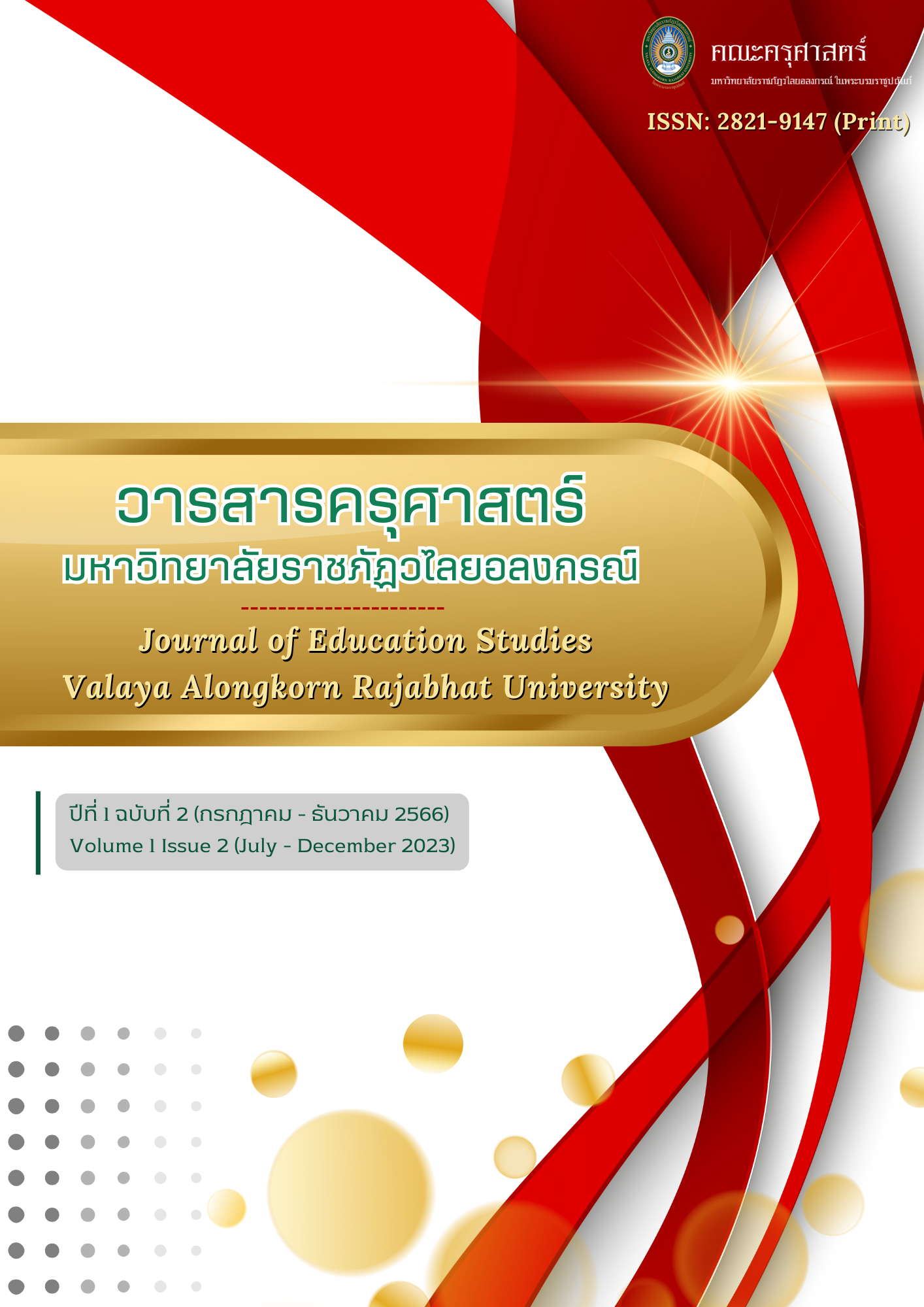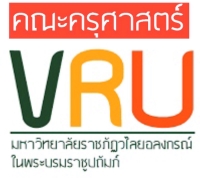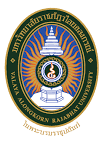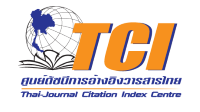การพัฒนาผลสัมฤทธิ์ทางการเรียนคณิตศาสตร์ เรื่อง อัตราส่วน โดยการจัดการเรียนรู้แบบร่วมมือเทคนิค (TGT) สำหรับนักเรียนชั้นมัธยมศึกษาปีที่ 1
คำสำคัญ:
ผลสัมฤทธิ์ทางการเรียนคณิตศาสตร์, อัตราส่วน, การจัดการเรียนรู้แบบร่วมมือ, TGTบทคัดย่อ
การวิจัยครั้งนี้มีวัตถุประสงค์ 1) เพื่อเปรียบเทียบผลสัมฤทธิ์ทางการเรียนคณิตศาสตร์ก่อนเรียนและหลังเรียน โดยการจัดการเรียนรู้แบบร่วมมือเทคนิค (TGT) เรื่อง อัตราส่วน 2) ศึกษาความพึงพอใจในการจัดการเรียนรู้แบบร่วมมือด้วยเทคนิค (TGT) สำหรับนักเรียนชั้นมัธยมศึกษาปีที่ 1 กลุ่มตัวอย่างที่ใช้ในการวิจัย ได้แก่ นักเรียนชั้นมัธยมศึกษาปีที่ 1 ภาคเรียนที่ 2 ปีการศึกษา 2565 โรงเรียนสหัสขันธ์ศึกษา อำเภอสหัสขันธ์ จังหวัดกาฬสินธุ์ จำนวน 34 คน ซึ่งได้มาจากการสุ่มแบบกลุ่ม เครื่องมือที่ใช้ในการวิจัยประกอบด้วย (1) แผนการจัดการเรียนรู้แบบร่วมมือเทคนิค (TGT) เรื่อง อัตราส่วน จำนวน 4 แผน (2) แบบทดสอบวัดผลสัมฤทธิ์ทางการเรียนคณิตศาสตร์ เรื่อง อัตราส่วน สำหรับนักเรียนชั้นมัธยมศึกษาปีที่ 1 แบบปรนัย จำนวน 20 ข้อ (3) แบบสอบถามความพึงพอใจในการจัดการเรียนรู้แบบร่วมมือด้วยเทคนิค (TGT) สถิติที่ใช้ในการวิเคราะห์ข้อมูล ได้แก่ ค่าเฉลี่ยเลขคณิต ( x̅ ) ส่วนเบี่ยงเบนมาตรฐาน (S.D.) และการทดสอบอันดับที่มีเครื่องหมายกำกับ ของวิลคอกสัน (The Wilcoxon Signed-Ranks Test)
ผลการวิจัยพบว่า
1. ผลสัมฤทธิ์ทางการเรียนคณิตศาสตร์ เรื่อง อัตราส่วน โดยการจัดการเรียนรู้แบบร่วมมือด้วยเทคนิค (TGT) สำหรับนักเรียนชั้นมัธยมศึกษาปีที่ 1 หลังเรียน ( x̅ = 12.41) สูงกว่าก่อนเรียน ( x̅ = 5.62) อย่างมีนัยสำคัญทางสถิติที่ระดับ .05
2. ผลการศึกษาความพึงพอใจในการจัดการเรียนรู้แบบร่วมมือด้วยเทคนิค (TGT) สำหรับนักเรียนชั้นมัธยมศึกษาปีที่ 1 นักเรียนมีความพึงพอใจอยู่ในระดับมากที่สุด ( x̅ = 4.84, S.D. = 0.242)
เอกสารอ้างอิง
กระทรวงศึกษาธิการ. (2560). ทำไมต้องเรียนคณิตศาสตร์ในมาตรฐานการเรียนรู้และตัวชี้วัด กลุ่มสาระการเรียนรู้คณิตศาสตร์ วิทยาศาสตร์ และสาระภูมิศาสตร์ ในกลุ่มสาระการเรียนรู้สังคมศึกษา ศาสนาและวัฒนธรรม (ฉบับปรับปรุง พ.ศ. 2560) ตามหลักสูตรแกนกลางการศึกษาขั้นพื้นฐาน พุทธศักราช 2551. https://www.ipst.ac.th/wp-content/uploads/2021/04/LearningStd2560.pdf
ธาดา ธิกุลวงษ์. (2553). การเปรียบเทียบผลสัมฤทธิ์ทางการเรียนวิชาคณิตศาสตร์ เรื่อง ทศนิยมที่สอน โดย ใช้กิจกรรมการเรียนแบบร่วมมือเทคนิค TGT กับ การสอนแบบปกติ ของนักเรียนชั้นประถมศึกษาปีที่ 6 [ปริญญานิพนธ์ปริญญามหาบัณฑิต]. มหาวิทยาลัยราชภัฏสวนสุนันทา. https://dric.nrct.go.th/index.php?/Search/SearchDetail/234426
บุญชม ศรีสะอาด. (2553). การวิจัยเบื้องต้น (พิมพ์ครั้งที่ 5). กรุงเทพฯ: สำนักพิมพ์สุวีริยาสาส์น.ฝ่ายวิชาการโรงเรียนสหัสขันธ์ศึกษา. (2563). คะแนนผลการทดสอบทางการศึกษาระดับชาติขั้นพื้นฐาน (O-NET) ชั้นมัธยมศึกษาปีที่ 3 [เอกสารรายงานสรุปผล]. กาฬสินธุ์: โรงเรียนสหัสขันธ์ศึกษา.
ฝ่ายวิชาการโรงเรียนสหัสขันธ์ศึกษา. (2564). คะแนนผลการทดสอบทางการศึกษาระดับชาติขั้นพื้นฐาน (O-NET) ชั้นมัธยมศึกษาปีที่ 3 [เอกสารรายงานสรุปผล]. กาฬสินธุ์: โรงเรียนสหัสขันธ์ศึกษา.
ภูวภัทร อ่ำองอาจ. (2561). การศึกษาผลสัมฤทธิ์ทางการเรียนวิชาคณิตศาสตร์และทักษะการคิดคำนวณ เรื่อง การบวกและการลบ ของนักเรียนชั้นประถมศึกษาปีที่ 1-2 แบบคละชั้นเรียน ที่ได้รับการจัดการเรียนรู้แบบร่วมมือเทคนิค TGT [ปริญญานิพนธ์ปริญญามหาบัณฑิต]. มหาวิทยาลัยเทคโนโลยีราชมงคลธัญบุรี. http://www.repository.rmutt.ac.th/handle/123456789/3530
มนธิรา นรินทร์รัมย์. (2565). ผลการจัดการเรียนรู้แบบร่วมมือด้วยเทคนิคทีมแข่งขันร่วมกับผังมโนทัศน์ ที่มีต่อผลสัมฤทธิ์ทางการเรียนและเจตคติต่อการเรียนวิชาคณิตศาสตร์ สำหรับนักเรียนชั้นมัธยมศึกษาปีที่ 4. วารสารวิชาการและวิจัยสังคมศาสตร์, 17(3). https://so05.tci-thaijo.org/index.php/JSSRA/article/view/254795
ศิริณา จ่าทอง. (2560). การเปรียบเทียบผลสัมฤทธิ์ทางการเรียนวิชาคณิตศาสตร์ เรื่อง สมการเชิงเส้นตัวแปรเดียว ของนักเรียนชั้นมัธยมศึกษาปีที่ 1 ระหว่างการจัดการเรียนรู้แบบ TGT กับแบบปกติโรงเรียนพรตพิทยพยัต. [โครงการหลักสูตรศึกษาศาสตรมหาบัณฑิต สาขาวิชาคณิตศาสตรศึกษา]. มหาวิทยาลัยรามคำแหง. http://www.edu-journal.ru.ac.th/index.php/abstractData/viewIndex/1843.ru
สุกัญญา สุดใจ. (2565). การพัฒนากิจกรรมการเรียนรู้คณิตศาสตร์ โดยใช้การจัดการเรียนรู้แบบร่วมมือเทคนิค TGT เพื่อส่งเสริมผลสัมฤทธิ์ทางการเรียน เรื่อง แผนภูมิแท่ง ของนักเรียนชั้นประถมศึกษาปีที่ 5 โรงเรียนชุมชนวังสะพุง [เอกสารนำเสนอ]. ราชภัฏเลยวิชาการ ครั้งที่ 8: เรื่อง การวิจัยเพื่อพัฒนาท้องถิ่นด้วยโมเดลเศรษฐกิจใหม่สู่เป้าหมายการพัฒนาที่ยั่งยืน. เลย. https://doi.nrct.go.th/ListDoi/Download/623536/e94f1a197a5d69c12cafc90ff84086d4?Resolve_DOI=10.14457/LRU.res.2022.21
อดิวัฒน์ เรือนรื่น. (2563). การศึกษาผลสัมฤทธิ์ทางการเรียนวิชาคณิตศาสตร์เรื่อง จำนวนเต็มของนักเรียนชั้นมัธยมศึกษาปีที่ 1 [ปริญญานิพนธ์ปริญญามหาบัณฑิต]. มหาวิทยาลัยศิลปากร. http://ithesis-ir.su.ac.th/dspace/bitstream/123456789/3332/1/60316324.pdf
Wilson, W. (1971). Evaluation of Learning in Secondary School Mathematics, Handbook on Formative and Summative Evaluation of Student Learning. ed. by Benjamin S. Bloom. U.S.A.: McGraw-Hill.





 คู่มือขั้นตอนการส่งบทความ
คู่มือขั้นตอนการส่งบทความ




